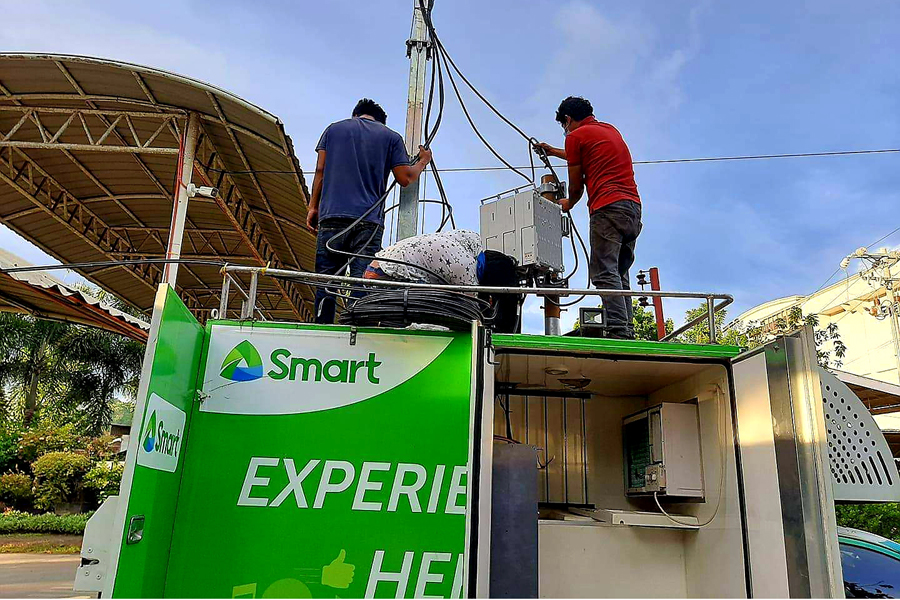PLDT wireless arm Smart Communications, Inc. (Smart) is boosting its network services at the University of Mindanao in Davao City, one of the oldest and biggest universities in southern Philippines, to benefit its students, teachers and surrounding communities and help the university gear up for online learning.
Aside from the cell site under construction inside the campus, Smart has also recently rolled out Multi-Element on Wheels (MEOW) equipment at UM to boost data, voice and SMS experience inside the university. Such measures are part of the preparations being undertaken by PLDT and Smart to help schools nationwide adopt flexible learning strategies.
“With improved connectivity, we expect stronger signal for voice calls, stable LTE connection, and increased speed in accessing information,” said UM Senior Vice President Edgardo O. Castillo.
“Being in the academe, the swift delivery of instruction is as crucial as the content itself. Quicker access to the cloud is much desired by both the faculty and the students. We also look forward to better support for connected multiple users coupled with enhanced security. At the end of the day, it will result to decreased stress to all users and savings for stakeholders in terms of time and finances,” Castillo added.

These efforts are part of PLDT and Smart’s fixed and wireless network expansion and upgrades across the country.
“As we gear up for the opening of classes, e-learning is shaping up to be one of the vital components of the new normal. With better connectivity, students and teachers alike will be able to interact with each other, access learning management systems, and share other online educational resources,” said Mario G. Tamayo, PLDT-Smart Senior Vice President for Network Planning and Engineering.
As of end-March, Smart has increased the number of 4G/LTE base stations nationwide to 26,000, up 6% from end-2019 and 60% more than end-2018. PLDT’s fiber infrastructure, which supports Smart’s network by providing high-capacity links to LTE base stations, is now at 338,500 kilometers nationwide, 5% more than end-2019 and up nearly 40% from end-2018.
In April, Smart further increased the capacity of its LTE network by reallocating its assigned 1800 Mhz frequency from 2G to 4G/LTE. As a result, 3,785 2G base stations of Smart are now also providing additional capacity for its LTE network.
Liked this post? Follow SwirlingOverCoffee on Facebook, YouTube, and Instagram.


